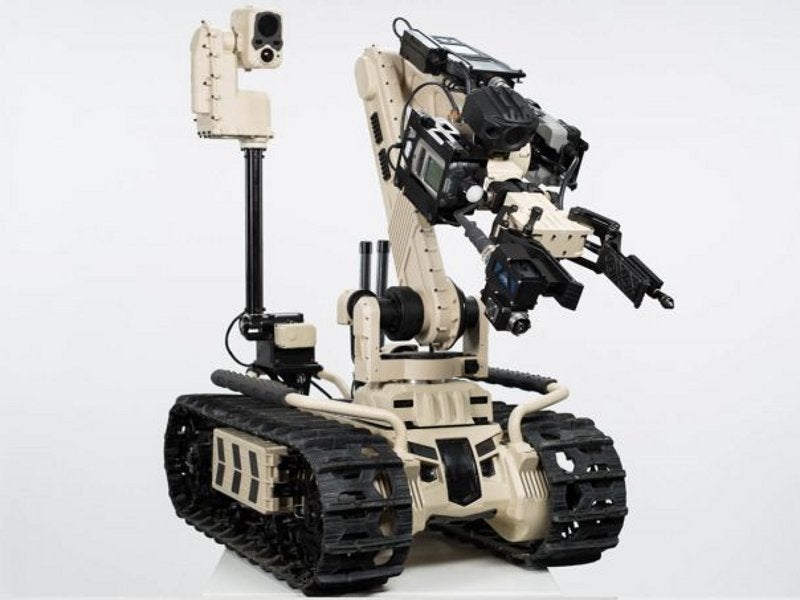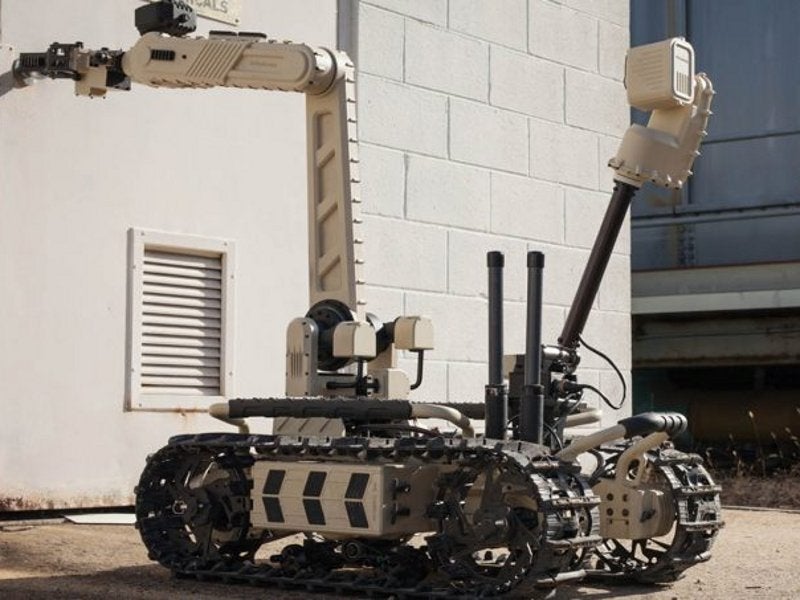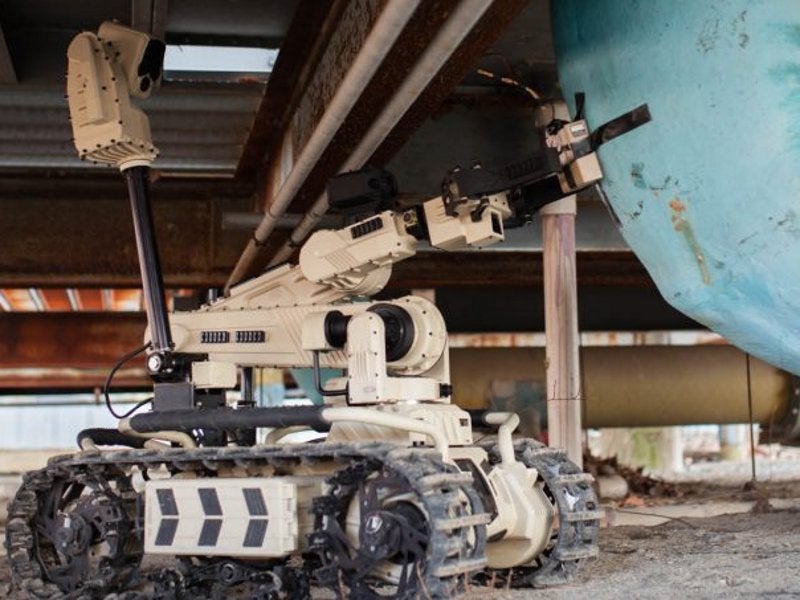Transportable Interoperable Ground Robot (TIGR) is an unmanned ground vehicle (UGV) designed and developed by Israeli unmanned robot manufacturer, Roboteam.
The TIGR UGV was launched during the AUSA Annual Meeting 2017 held in Washington DC, US, in October 2017.
The UGV is designed to offer intelligence and surveillance, situational awareness, hazardous material (HAZMAT) handling, subterranean and culvert inspection, chemical, biological, radiological, and nuclear (CBRN) detection, improvised explosive device (IED), and explosive ordinance disposal (EOD) services.
Roboteam was awarded a contract by the New Zealand Defense Force in May 2019 for the delivery of TIGR UGV along with its Micro Tactical Ground Robot (MTGR) and Individual Robotic Intelligence System (IRIS).
TIGR UGV design and features
The TIGR platform consists of the robot, controller, power supply, cables, and accessories, carrying case, manipulator, and observation head.
It is based on a rigid chassis fitted with caterpillar tracks and features modular design for the integration of additional sensors and equipment based on the mission requirement.
The system is capable of carrying a maximum payload of 150kg, while the total weight of the robot is 74kg, which includes the weight of six batteries. Its length and width are 0.91m and 0.59m respectively, while its height excluding disrupter is 0.35m.
The TIGR robot can optionally integrate multiple CBRN sensors, and IED and EOD modules along with the manipulator arm.
TIGR UGV manipulator arm details
The unmanned ground vehicle is fitted with a 14kg advanced manipulator arm with six degrees of freedom. It offers contentious 360° pan, 220° shoulder pitch and yaw, two 290° elbow pitch options, and 360° wrist roll and yawing.
The length of the manipulator arm when fully collapsed is 0.8m, while it measures up to 1.5m when fully extended. The arm can reach objects located at a vertical distance of 1.8m and a horizontal reach of 1.4m.
TIGR UGV’s manipulator arm is designed to pick hazardous and dangerous objects. It is capable of lifting 19kg of weight near to the platform and 7kg of weight in the extended position.
The arm is designed in accordance with the military standard reliability specifications such as MIL-STD-209, 461, 464, 810, 882, 1472, and 1474. It has eight interoperability (IOP) ports for the flexibility of the users.
Details of the TIGR UGV observation head
TIGR UGV integrates a vision module featuring six high-definition cameras with day, night, and thermal vision capabilities.
The module can record 360° videos with a maximum zoom up to 30 times. It integrates four white and near-infrared (IR) high-sensitivity sensors for capturing imagery and video in low light and near dark conditions.
The module offers human recognition in any light conditions and can identify a human at a distance up to 300m at night and up to 600m during daylight.
TIGR UGV control unit details
The robot is controlled using ROCU-7, a secure, multi-mission wireless control and command unit featuring a 7in display screen.
The 2.3kg control unit is certified to be of IP65 water-proof standard and facilitates easy operation even in difficult conditions. It integrates Intel Atom E3845 1.91GHz quad core processor operating on Windows 7 operating system.
Powered by a military-standard battery pack or wired interface, the control unit can work for three to six hours depending on the mission.
The communication between the control unit and TIGR is established using encrypted IP MESH technology.
Propulsion and performance
The TIGR UGV is designed to assist troops across multiple terrains such as snow, rubble, water, mud, stairs, thicket, subsurface, and debris.
Equipped with ingress protection (IP) 67 standard protection level of safety features, the robot can withstand temperatures ranging between -31°C and 48°C.
The UGV can cross vertical obstacles of 30cm and climb slops of 45°, while its operating range within the line of sight is 1.3km.
With a pack of six batteries, the vehicle can operate for eight hours. Its endurance can be extended to up to ten hours by installing an additional two batteries.






